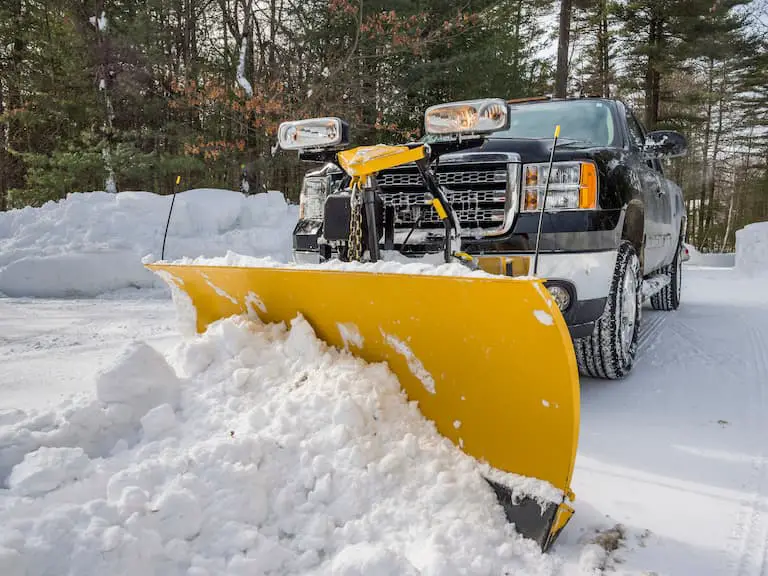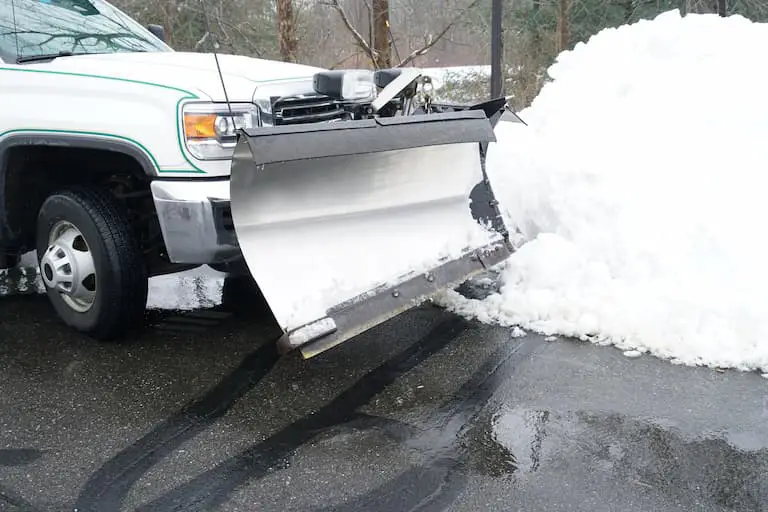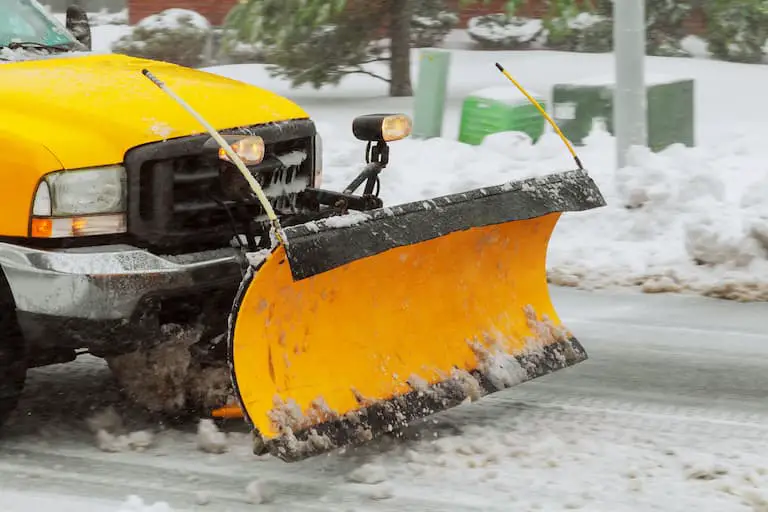As an Amazon Associate, we earn from qualifying purchases. We may also earn commissions if you purchase products from other retailers after clicking on a link from our site.
Snowplowing has been an age-long method of removing snow from the streets and residential areas. So, a snowplow is necessary if you live in a region that receives heavy snowfall. But have you ever wondered why snow plows have springs on them?
Snowplows have springs on them to act as shock absorbers. They protect the snowplow from the impact of bumping into hard objects or plowing on rough surfaces. They also minimize vibrations by making the blade less rigid.
It’s crucial to keep your snow plow in good condition to extend its life. In this article, I’ll discuss a few topics related to snowplow springs. Let’s dig in!

What Do the Springs on Snow Plows Do?
The springs on snowplows minimize the impact of the hard mounds of snow on the roads. They absorb the shock that snowplows encounter just like car shock absorbers, and they’re essential in protecting the snow plows from damage.
You’ve probably come across large springs on the back of a snow plow’s blade but didn’t know why they were there. Trip springs are shock absorbers that allow the plow blade and moldboard to trip forward and backward.
Therefore, these are trip springs that provide balance and stability to a snowplow.
Trip springs are essential for all types of snowplows, as they enhance their resilience while also protecting the road from damage. The springs are available in various styles and sizes, custom-tailored for specific snow plow designs.

But, the two main types of trip springs include:
- Rubber springs: These are long-lasting trip springs comprising an extra layer of protection, and are best suited for concrete and asphalt roads since they protect the snowplow from any obstacles on the roads. These springs are also cost-friendly.
- Metal springs: They’re more resilient and pricey than rubber springs. So, they’re the best option if you’re planning to use your snowplow for a long time.
You can also categorize snow plow springs based on their functions. In this case, we have three types of springs, which are:
- Compression springs: These are helical springs that absorb the shock or impact of hard objects through compression. When pressed or in the event of torsional stress, these springs also exert some force. They are available in different shapes, including conical, cylindrical, concave, and barrel.
- Extension springs: These are cylindrical, helical springs that exert force when extended or exposed to torsional stress. They usually have hooks or attachment components on both ends. Apart from snowplows, you can find extension springs on garage doors or planter row units.
- Torsion springs: These are tightly-wound coil springs that expend rotational or torque forces. They’re also exposed to bending stresses, and you’ll most likely find them over a shaft or mandrel. Torsion springs have varying components on their edges, including spaces for body lengthening.
How Trip Springs Work
Trip springs initiate blade tripping to protect the snowplow and the blade from the impact of obstacles.
You may not notice this process when your truck is at a slow speed since the vehicle’s inertia will allow it to remove the object. Therefore, the springs absorb the shock and reduce the impact’s energy, minimizing potential damage.
Apart from the blade tripping mechanism, pressure relief valves reduce the energy produced by hitting obstacles.
These valves use hydraulic cylinders that absorb some energy and reduce the shock. Hence, the springs and the pressure relief valves protect the snowplow, truck, and driver from the impact of encountering hard objects on the road.
Why Do You Adjust a Snow Plow’s Springs?
You adjust the trip springs on your snowplow to protect the moldboard from damage. It is also a safety precaution as loose springs pose a risk to the plow truck’s operator. Therefore, well-adjusted springs are durable.

It’s crucial to do a maintenance check on your snowplow before plowing. Inspecting the plow will also entail checking whether the trip springs are in good condition, and if they aren’t, you need to adjust them to the recommended tension.
You’ll need to adjust both metal and rubber trip springs. The process involves loosening the springs first and then re-adjusting the cutting edges to the right position. After that, you need to tighten the trip springs depending on the plowing conditions.
Here’s a YouTube video demonstrating how to adjust your snowplow edge spring:
When not plowing, your trip springs shouldn’t be tight. Therefore, you should loosen them to release the tension before storage. Storing the springs this way will extend their life.
What Are the Best Springs for Snow Plows?
The best springs for snowplows should provide maximum protection and resilience, and they should be made from high-quality and durable materials. The ideal trip springs also depend on what type of snowplow you’re using.
Here are some of the best trip springs (available on Amazon.com) for your snow plow:
- Polaris Trip Spring: This is a high-quality trip spring specifically designed for Polaris ATV snow plows. These heavy-duty springs are for the plow’s part 2877443. They’re also long-lasting and resilient.
- Buyers Product Trip Spring: It’s a premium steel spring with a black powder coating to prevent corrosion. The trip spring is an ideal replacement for various snow plow types, and due to its strength, you can depend on this trip spring for all your plowing needs.
- 4PK Snow Plow Trip Springs: These are heavy-duty and high-quality trip springs and are the perfect replacements for Meyer snowplow springs. They’re also easy to install and cost-friendly.
- Western Snow Plow Trip Spring: It is an ideal trip spring for EZ replacement, and is best suited for all Western snow plows. They’re made from durable materials, so you don’t have to worry about purchasing new ones every winter.
Final Thoughts
Snow plowing is not only hard on your truck but also on the snowplow. Therefore, installing resilient and high-quality trip springs is vital to prevent damage. Trip springs on your snowplow act as shock absorbers, minimizing the impact of obstacles or rough roads.
